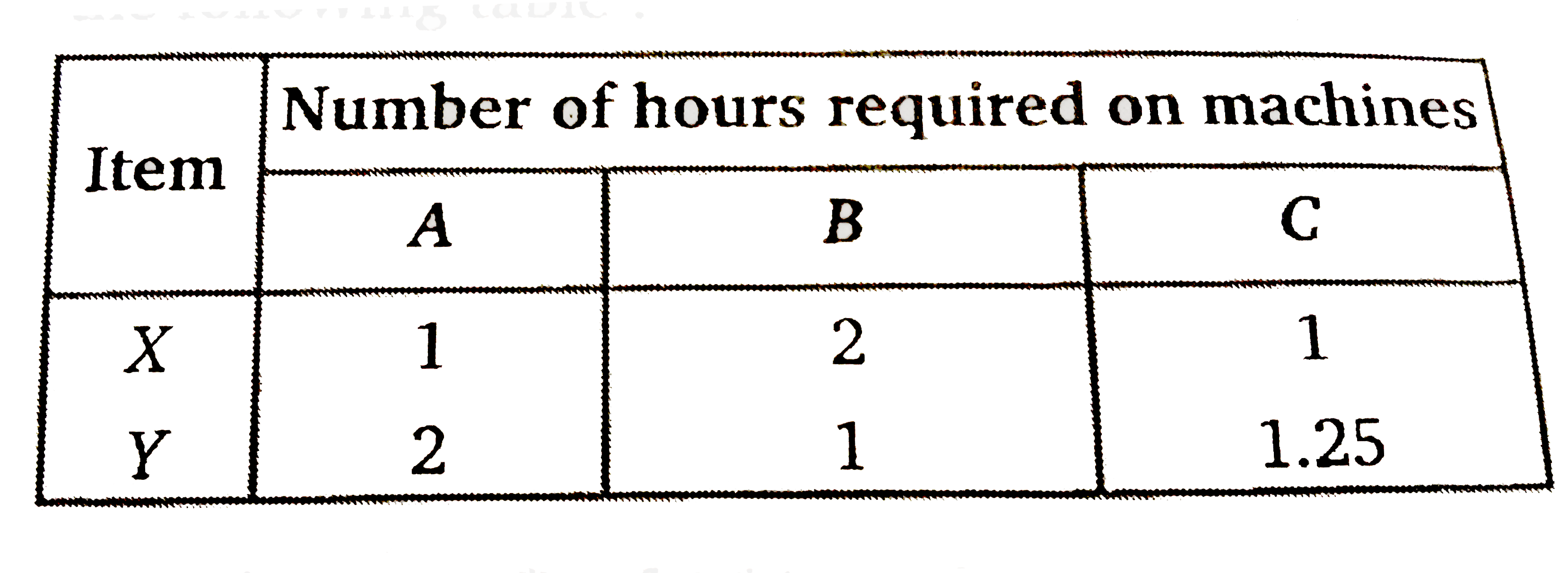A factory has two machines A and B. Past record shows that machine A produced 60% of the items of output and machine B produced 40% of the items. Further, 2% of the items produced by machine A and 1% produced by machine B were defective. All the
Step by step video & image solution for A factory has two machines A and B. Past record shows that machine A produced 60% of the items of output and machine B produced 40% of the items. Further, 2% of the items produced by machine A and 1% produced by machine B were defective. All the by Maths experts to help you in doubts & scoring excellent marks in Class 12 exams.
Updated on:21/07/2023Topper's Solved these Questions
Similar Questions
A factory has two machines A and B. Past records show that the machine A produced 60% of the items of output and machine B produced 40% of the items further 2% of the items produced by machine A were defective and 1% produced by machine B were defective. If an item is drawn at random, what is the probability that it is defective?
View SolutionAn item is manufactured by three machines A, B and C. Out of hte total number of items manufactured during a specified period, 50% are manufacture on machine A, 30% on B and 20% on C. 2% of the items produced on A and 2% of items produced on B are defective and 3% of these produced n C are defective. All the items stored at one godown. One item is drawn at random and is found to be defective. What is the probability that it was manufactured on machine A?
View SolutionAn item is manufactured by three machines A, B and C. Out of the total member of items manufactured during a specified period, 50% are manufactured on A, 30% on B and 20% on C. 2% of the items produced on A and 2% of items produced on B are defective and 3% of these produced on C are defective. All the items are stored at one godown. One item is drawn at random and is found to be defective. What is the probability that it was manufactured on machine A?
View SolutionIn a certain factory, machines A, B and C produce bolts. Of their production. machines A. B. and c produce 2% 1 % and 3% defective bolts respectively. Machine A produces 35 % of the total output of bolts. machine B produces 25% and machine C produces 40% A bolts is chosen at random from the factory's production and is found to be defective. The probability it was produced on machine C is
View SolutionA factor has three machines A, B and C, which produce 100,200, and 300 items of a particular type daily. The machines produce 2%, 3% and 5% defective items respectively. One day when the production was over, an item was picked up randomly and it was found to be defective. Find the probability that it was produced by machine A.
View SolutionA manufacture produceds two types of steel trunks. He has two machines, A and B. The first type of book case requires 3 hours on machine A and 3 hours on machine B for completion whereas the second type required 3 hours on machine A and 2 hours n machine B. Machines A and B can work at most for 18 hours and 15 hours per day respectively. He earns a profit of Rs.30 and Rs.25 per trunk of the first type and second type respectively. How many trunks of each type must he make each day to make the maximum profit?
View SolutionIn a factory, two machines A and B manufacture 60% and 40% respectively of the total output from which 2% and 1% respectively are defective. If randomly selected one item is defective, find the probability that it was manufactured by machine B.
View SolutionA manufacturer has three machines A,B and C installed in his factory. Machines A and B are capable of being operated for atmost 12 hours whereas machine C must be operated for atleast 5 hours a day. He produces only two items X and Y each requiring the use of all the three machines. The number of hours required for producing 1 unit of each of X and Y on three machines are given in the following table:

He makes a profit of Rs. 600 and Rs. 400 on each item of X and Y respectively. How many of each item should he produce so as to maximize his profit assuming that he can sell all the items that he produced?
View SolutionThree machinesE1, E2 and E3 in a certain factory producing electric bulbs, produce 50%, 25% and 25% respectively, of the total daily output of electric bulbs. It is known that 4% of the bulbs produced by each of machines E1 and E2 are defective and that 5% of those produced by machine E3are defective. If one bulb is picked up at random from a day’s production, calculate the probability that it is defective.
View Solution(Manufacturing problem) A manufacturer has three machines I, II and III installed in his factory. Machines I and II are capable of being operated for at most 12 hours whereas machine HI must be operated for atleast 5 hours a day. She produces only two items M and N each requiring the use of all the three machines. The number of hours required for producing 1 unit of each of M and N on the three machines are given m the following table:She makes a profit of Rs 600 and Rs 400 on items M and N respectively. How many of each item should she produce so as to maximise her profit assuming that she can sell all the items that she produced? What will be the maximum profit?
View Solution
